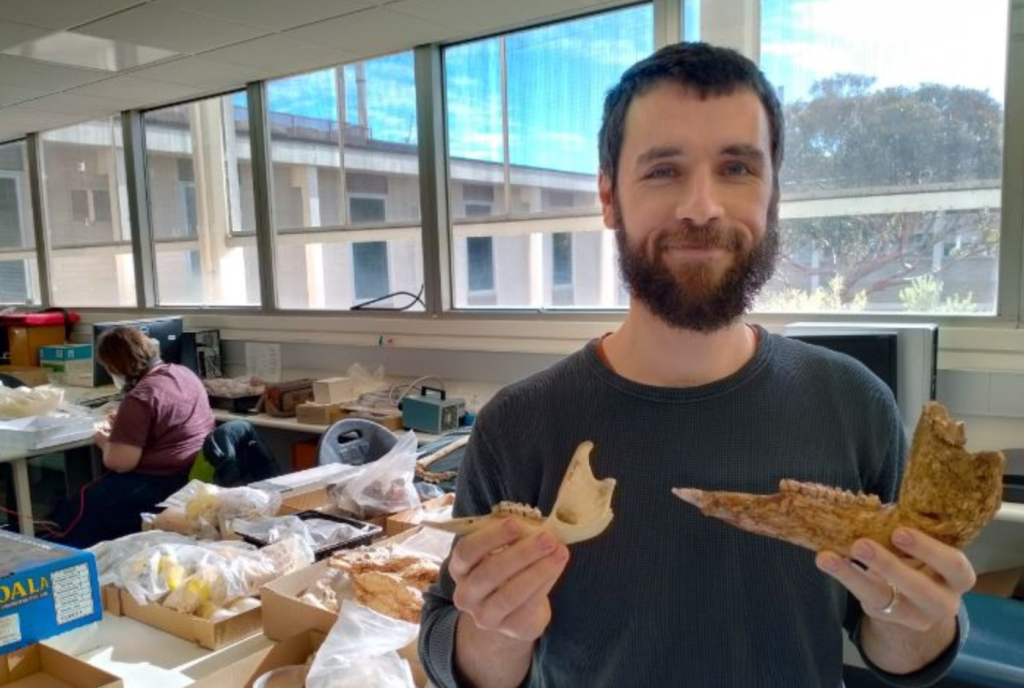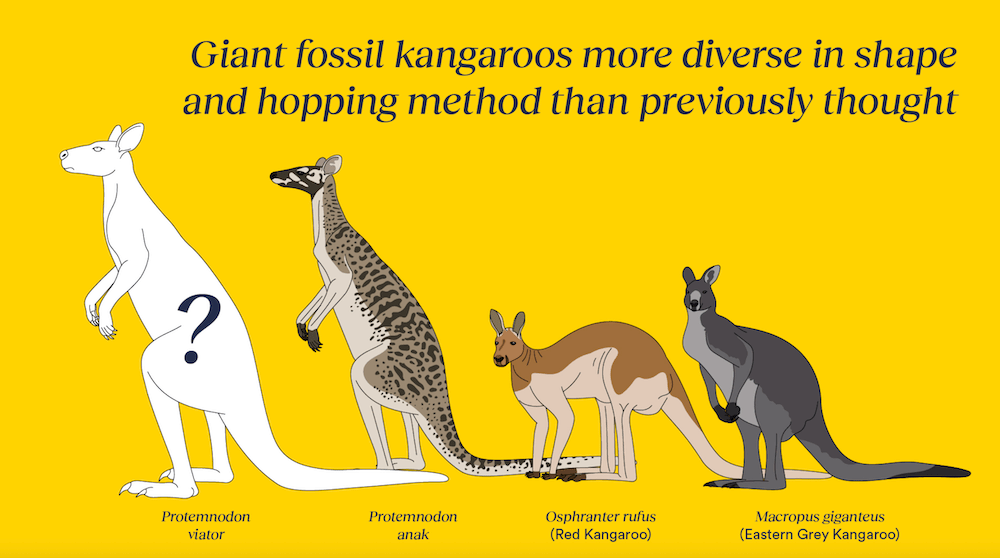New kangaroo-related species discovered, questions on extinction remain

Source: Flinders University
Scientists have unearthed three species of now-extinct kangaroo genus, which were more diverse in shape and range than previously thought.
In 2013, 2018 and 2019, multiple complete fossil Protemnodon skeletons were discovered in Lake Callabonna in arid South Australia.
At the time, Dr Isaac Kerr was a PhD student and the unearthed fossils allowed for him to “unpick a nearly-150-year-long puzzle around the identities of the species of Protemnodon”.
In 1874, the first species of Protemnodon, an extinct megafauna once found in Australia, were described by British naturalist Sir Richard Owen.
Despite going extinct about 40,000 years ago on mainland Australia and perhaps a little later down the line in Tasmania and New Guinea, Protemnodon fossils are fairly common across Australia.

Researcher Dr Isaac Kerr is seen comparing an extant kangaroo jaw bone, left, and Australian megafauna kangaroo jaw bone.
“The three new species are of the extinct genus Protemnodon, which lived from around five million to 40,000 years ago – with one about double the size of the largest red kangaroo living today,” Flinders University explained.
The palaeontologists at the university did a new study, which Kerr was the lead author, and reviewed all the species of Protemnodon, concluding that all were “quite different from one another”.
Not only did the species adapt so they could live in different environments, the scientists believe they even hopped in different ways.
Tweet from @IsaacARKerr
What the new-old kangaroo relatives would have looked like
Scientists believe the Protemnodon would have looked similar to the grey kangaroo, but more squat and muscular.
Some would weigh about 50 kilograms, but other species were “much larger than any living kangaroo”.
One of the new species which was named in the Flinders University study, the Protemnodon viator, was much larger than any kangaroo we have today, weighing up to 170 kilograms.
“Protemnodon viator was well adapted to its arid central Australian habitat, living in similar areas to the red kangaroos of today,” the university said.
“It was a long-limbed kangaroo that could hop fairly quickly and efficiently. Its name, viator, is Latin for ‘traveller’ or ‘wayfarer’.”
In addition to Protemnodon viator, the researchers also discovered two new species, Protemnodon mamkurra and Protemnodon dawsonae, while they were revisiting the work of earlier researchers, including Owen.

Australian researchers have found complete giant fossil kangaroos.
Why did Protemnodons go extinct, while kangaroos survived?
The published study comes after Kerr visited 14 museums in four countries to study “just about every piece of Protemnodon there is”.
More than 800 specimens taken from Australia and New Guinea were photographed and 3D-scanned.
“It feels so good to finally have it out in the world, after five years of research, 261 pages and more than 100,000 words. I really hope that it helps more studies of Protemnodon happen, so we can find out more of what these kangaroos were doing,” Kerr said.
“Living kangaroos are already such remarkable animals, so it’s amazing to think what these peculiar giant kangaroos could have been getting up to.”
What’s not yet clear is why the newly discovered species of Protemnodon went extinct, while closely related animals like wallaroos and grey kangaroos survived.
However, the researchers are optimistic this study could aid in answering that question.
“It’s great to have some clarity on the identities of the species of Protemnodon,” said Flinders Professor Gavin Prideaux, a co-author of the major new article in Megataxa.
“The fossils of this genus are widespread and they’re found regularly, but more often than not you have no way of being certain which species you’re looking at. This study may help researchers feel more confident when working with Protemnodon.”








